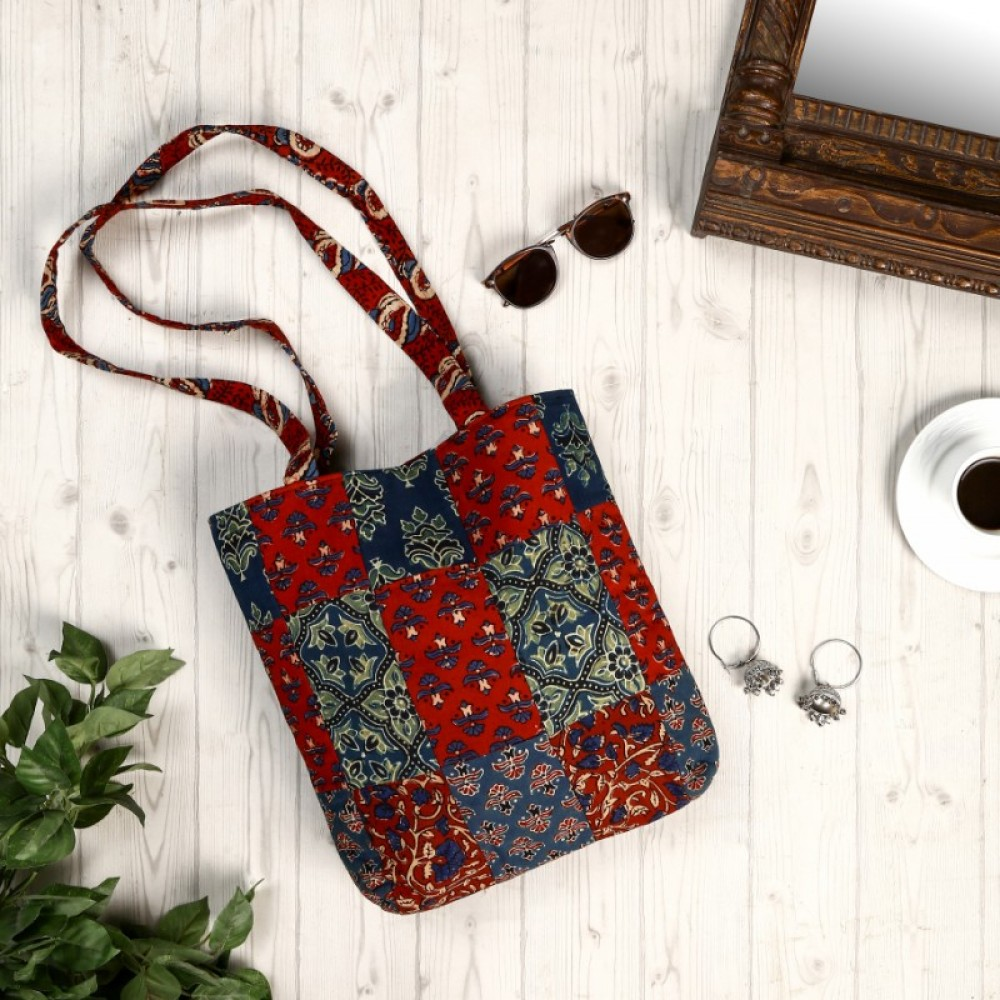Ajrakh – Simplicity & Elegance
One of the customs in which India as a country passes on what necessities be is through its rich and extensive assortment of Textiles. It’s a blend of remarkable craftsmanship, ingenuity, extraordinary tones and best quality. One of the strategies for making awesome materials is the hand printing. It is one of the most settled Indian workmanship outlines in which expert’s use wooden squares for making complex models on the surface. These prints in recent times have gained global recognition.
The Word Ajrakh

Ajrakh is the perfect mix of handloom materials and vegetable hues. The word Ajrakh is gotten from an Arabic word “Ajrak” which implies “blue” as blue happens to be one of the main shades in Ajrakh printing and it is one of the most prepared printed surfaces known to individuals.
The Process

Ajrakh is found in Sindhi; Kutch, Gujarat; and Rajasthan. It shows uncommon plans and models made using square printing by stamps. Ajrakh printing is a long strategy including various periods of printing and washing the surface over and over with various trademark hues. The entire methodology can take as long as around fourteen days achieving the creation of the appealing case of the Ajrakh. An Ajrakh novel generation incorporates in excess of twenty phases, notwithstanding the way that these methods are balanced nowadays as demonstrated by the craving of the customers and quality necessities.
Market

Nowadays mostly cities are overpowered with machine printed and falsely hued materials like Ajrakh. In any case, the veritable class of Ajrakh materials can be directed by the sort of surface and shading being used. Genuine materials are always engraved on ordinary surfaces to radiate the multifaceted nature of its squares. As the workmanship was at first made using trademark hues, it is simply basic plant hues that draw out the charm from Ajrakh printing squares.
Effect of Globalization on this Art

In order to convey one meter of the surface thirteen liters of water is required and as a result of the pollution of the conduits it is getting about hard to make Ajrakh. Beforehand, vegetable hues accepted the noteworthy activity truly coming to fruition, however at this point the engineered hues have tilted the earth of the system along these lines upsetting the methodology. Genuine absence of water has upset the occupations of the system. Close by NGOs are working in the consolidation of ecofriendly hues and in restoring the water bodies in and around the region of Kutch. The future looks sad yet with successful undertakings and a sorted-out game plan, one can restore the enormity of the undervalued aptitude from the malicious arms of the globalization.



